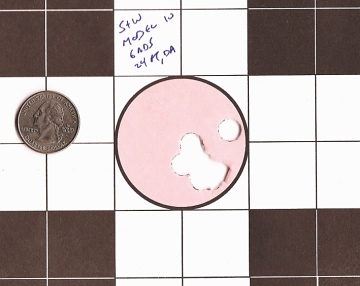small problem....
I'd feel more at ease decocking a pistol while covering a BG, if it came to that, than putting the safety on one of my 1911's - at that point, I'd prefer no to hurt him accidentally,...
There's a small problem with that idea. Decocking the gun while having it pointed at someone is an unsafe practice. And vastly more dangerous than putting the safety on a 1911A1.
Since you, at that point, prefer not to hurt him accidentally, putting the safety on a 1911A1 poses zero threat of discharge (provided, of course you are keeping your finger OFF the trigger). And even with a finger ON the trigger, activating the safety keeps the gun from firing, should you actually pull the trigger.
However, with a DA gun, one that decocks when you apply the safety, or like Sigs, has only the decock feature, there is a risk of the gun firing. Not a big one, true, but a risk, nonetheless. Walthers are notorious for firing when being decocked, if something has broken in the safety system. Certainly, no gun should fire when being decocked, but some can, and under the right conditions, do. ALWAYS point the muzzle in a safe direction when decocking, no matter what you are using!
Gun design has come a long way since the first DA autos, and they should be safe to decock, but, everything made by man can fail. Never trust your life, or someone else's, to any mechanical safety! And yes, that goes for my beloved 1911 as well.
I realize it is anecdotal evidence, so take it for that, but I have personal knowledge of one DA auto, which had been owned for years that would fire when decocked. The problem stayed hidden for years, because the owner always did exactly the same thing when decocking the gun. He held it down, and sideways when working the decock lever. Never had any trouble. One day at the range, a friend wanted to shoot it, and when he decocked the gun (to fire it DA) he was holding it upright in firing position. And it fired! Both (highly surprised) men tested it several times, and it was consistent! When held muzzle down, tilted sideways and decocked, it never went off. When held in a firing grip, pointed down range and decocked, it fired every time!
Yes, it was broken. At certain angles, the broken parts lined up enough to work, at other angles, they didn't! Now, that could never happen to your new whizz bang combat tupperware crunchenticker, right? Right? Don't bet your life, or anyone else's on it!

